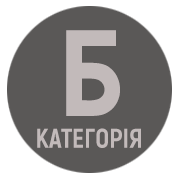Features of lexical and grammatical transformations in film translation (based on the translation of the television series “The IT Crowd” into Ukrainian and Polish)
DOI:
https://doi.org/10.32782/2617-3921.2024.26.144-162Keywords:
filmonim translation, transformation, phatic communication, invective, jargonism, speech act, wordplay, phraseological unitAbstract
The proposed article presents the translation of filmonism in the British comedy television series "The IT Crowd" as signs of communicative and precedent situations. Their consideration through the prism of phatic communication, related to verbalized pragmatic situations such as accusations, promises, threats, warnings, approvals, and other speech acts, allows us to clarify the means of expressing various emotions, antics, real or pretended conflict situations, and primarily the deviant behavioral stereotypes of the characters of the television series. The focus of the study is on communicative formulae and pragmemes, nominative and discursive units used in dialogues, which acquire a unique reproduction in target texts, specifically in Ukrainian and Polish. In the narrative-semiotic plane of the film, there are many offensive and abusive expressions, substandard and obscene vocabulary, represented by stylistically lowered expressives, which mostly portray the negative image of the participants in the comedic script. From the perspective of interlingual equivalents and translation transformations at different language levels, analogous constructions for conveying ethnocultural content are considered, such as "adaptive transcoding" (realia, partial equivalents, synonymous compensations, lexical-semantic replacements). Attention is paid to literal and descriptive translation of units, features of conveying language play, exclamatory phraseology, word-forming occasionalisms, euphemisms. On the other hand, means of reproducing allusions and hints, intertextual expressions, live and dead metaphors, individual author comparisons as components of precedent text are explored.
References
Бацевич Ф. Основи комунікативної девіатології. Львів: ЛНУ ім. Івана Франка, 2000. 236 с.
Бацевич Ф.С. Вступ до лінгвістичної генології. Навчальний посібник. Київ: Академія, 2006. 248 с.
Берест Р.В. Молодіжний контент. Словник комп’ютерного сленгу: Проблеми укладання та редакційної підготовки (https://kubg.edu.ua/images/stories/Departaments/nmc.nd/student_nauka/2017-2018/roboty_peremozhciv/molod-kontent.pdf)
Бухольц Н.А. Відтворення ідіолекту персонажів анімаційних фільмів у перекладі. Автореферат дисертації... канд. філол. наук /10.02.16 – перекладознавство. Херсонський державний університет, Херсон, 2016. 19 с.
Іваницька Н.Б. Англомовні фільмоніми в українському перекладі // Вчені записки ТНУ імені В. І. Вернадського. Серія: Філологія. Журналістика. Том 32 (71). № 4. Ч. 2. 2021. С.103–111.
Кропінова Т. В. Переклад кінотексту: специфіка кінотексту як перекладацького об'єкта // Теорія і практика перекладу. 2009. № 6. C. 407–411.
Павлик Н.В. Комунікативна та структурно-семантична організація фатичних мовленнєвих актів в англійській та українській мовах (на матеріалі драматичнних творів). Дис.... кандидата філологічних наук /10.02.17 – порівняльно-історичне і типологічне мовознавство. Національний педагогічний університет імені М.П. Драгоманова, Київ: НППУ імені М.П. Драгоманова, 2017. 257 с.
Полякова О.В. Стратегії добору ліпсинк-відповідників в українському дубляжі англомовних анімаційних фільмів. Дис... канд. філол.наук /10.02.16 – перекладознавство. Національний авіаційний університет Одеса. 2015. 186 с.
Ставицька Л. Український жаргон. Словник. Київ: Критика, 2005. 496 с.
Чорновол-Ткаченко Р.С. Прецедентний текст як основа лінгвостилістичної реалізації категорії інтертекстуальності (на матеріалі казок Льюїса Керрола). Автореф. дис.... канд. філол. наук / 10.02.04 – германські мови. Харківський національний університет імені В.Н. Каразіна. Харків, 2007. 21 с.
Bańko M. Słownik porównań. Warszawa: Wydawnictwo naukowe PWN, 2004. 268 s.
Dunaj B. Słownik języka polskiego. Warszawa: Wilga, 2005. 902 s.



